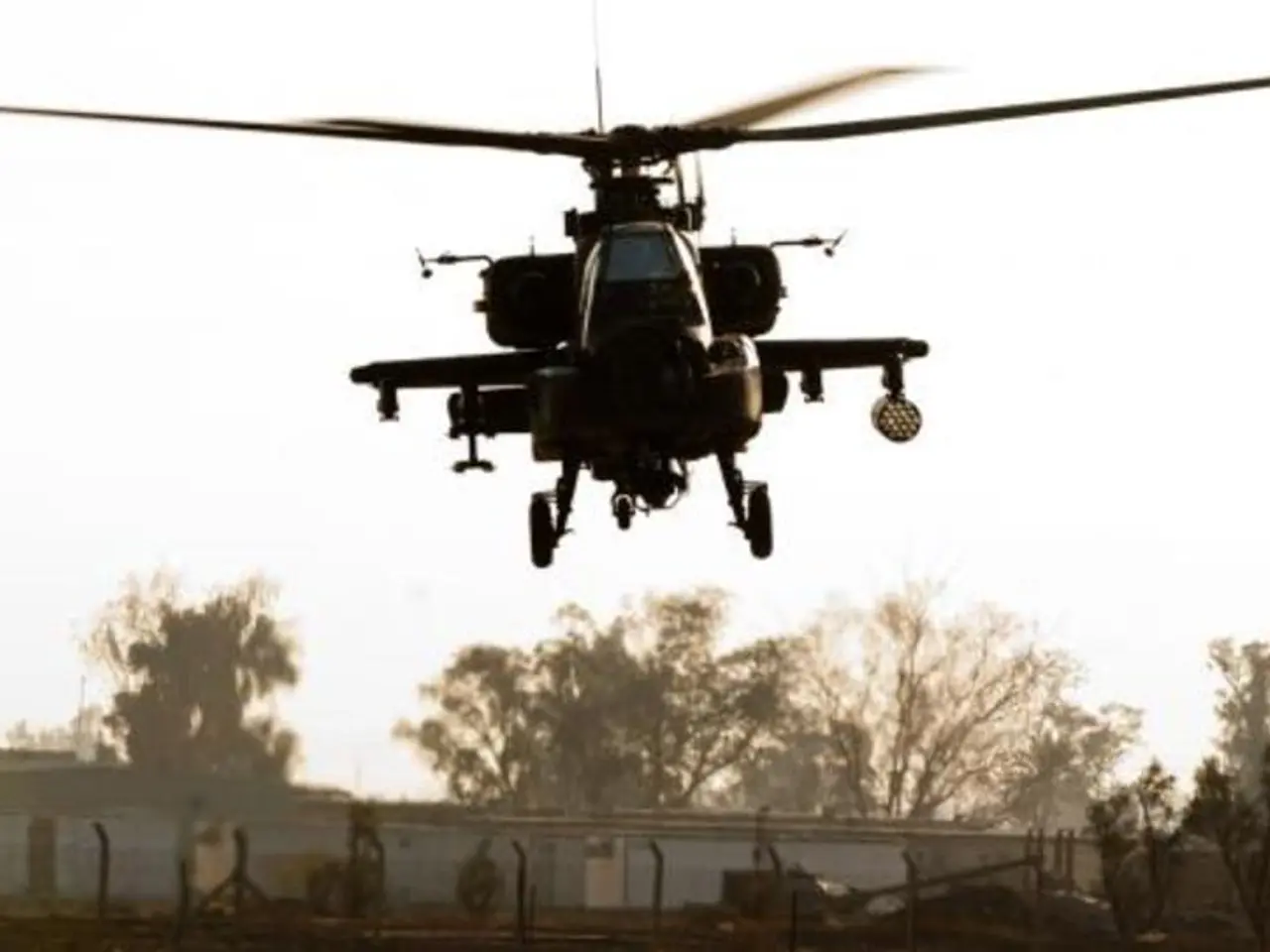Aviation Training with Night Vision Goggles: Pilot Education Insights
Helicopter pilots undergo a comprehensive and meticulous training programme when it comes to Night Vision Goggles (NVG) flight, designed to equip them with the necessary skills and competencies to operate safely and effectively in low-light conditions.
At the heart of this training lies a structured approach, covering both ground school and flight operations.
## Ground School
Pilots begin their training by gaining a profound understanding of eye physiology, particularly as it pertains to low-light conditions. This knowledge serves as the foundation for understanding how NVGs work and their limitations.
Detailed knowledge on NVG operation is another crucial aspect of ground school. Students learn about the equipment's capabilities, its limitations, and safety protocols and emergency procedures associated with its use. Theoretical and technical instruction typically involves approximately 8 hours of classroom time.
## Flight Operations
Upon completing ground school, pilots transition to practical training. Initially, they train during the day to familiarise themselves with the aircraft and NVG systems. Once comfortable, they move on to nighttime flights, where they practice using NVGs for normal takeoffs, landings, and emergency procedures.
The flight component of NVG training follows FAA standards, requiring 1.5 hours of daytime training followed by 5.5 hours of actual NVG operations.
## Equipment Mastery
An essential part of NVG flight training is mastering Night Vision Imaging Systems (NVIS). Students learn to test equipment before each flight, adjust for different ambient light conditions, and recognise system malfunctions during training.
Pilots also learn to compensate for the two-dimensional imagery provided by NVGs by using additional visual cues and frequent instrument references.
## Crew Coordination
Effective communication and teamwork between pilots and other crew members are paramount during NVG operations. Regular briefings and debriefings ensure that all crew members are aligned and aware of the mission parameters.
## Risk Management
Pilots are trained to identify potential risks associated with NVG operations, such as spatial disorientation. They develop judgment skills to make safe decisions during night flights, including the ability to abort a mission if necessary.
## Decision-Making
Maintaining high levels of situation awareness and adaptability are key components of NVG flight training. Pilots learn to adapt to changing conditions and unexpected emergencies during NVG flights.
## Recurrent Training Requirements
Pilots must undergo recurrent training to maintain proficiency in NVG use and to update their skills with new technologies or procedures. This continuous proficiency ensures that pilots remain competent in NVG operations over time.
## Specialized Courses
Some programs offer advanced courses focusing on specific operations, such as night operations in different environments or with various aircraft types. Integrated training that combines NVG operations with multi-engine aircraft and Instrument Flight Rules (IFR) capabilities is also available.
The effectiveness of improved NVG training and procedures is evident in the reduction of nighttime fatal helicopter air ambulance accidents. From 15/47 in 2010-2015, the number of such accidents decreased to 3/36 in 2016-2021.
In conclusion, NVG flight training is designed not only to teach pilots how to use NVGs effectively but also to enhance their overall night flight capabilities, safety, and decision-making skills under challenging conditions. Safety is further promoted by specialized programs provided by professional training organisations, focusing on actual operational environments and mission requirements. NVG flight training aims to produce pilots who can safely operate in demanding night environments, mastering technology and judgment for improved capabilities and a deeper perspective on night flight operations.
In light of this detailed NVG flight training, one could argue that the integration of technology, such as Night Vision Goggles and Night Vision Imaging Systems, in the aerospace industry has a profound impact on the education and self-development of helicopter pilots. The knowledge and skills gained through this training can also be valuable in other industries where competency in low-light conditions and effective risk management are essential, such as finance or education-and-self-development.
Furthermore, the success of these training programs, demonstrated by the decline in nighttime fatal helicopter air ambulance accidents, highlights the importance of constant industry innovation and improvement in finance, technology, and education-and-self-development to ensure safety and efficiency.




